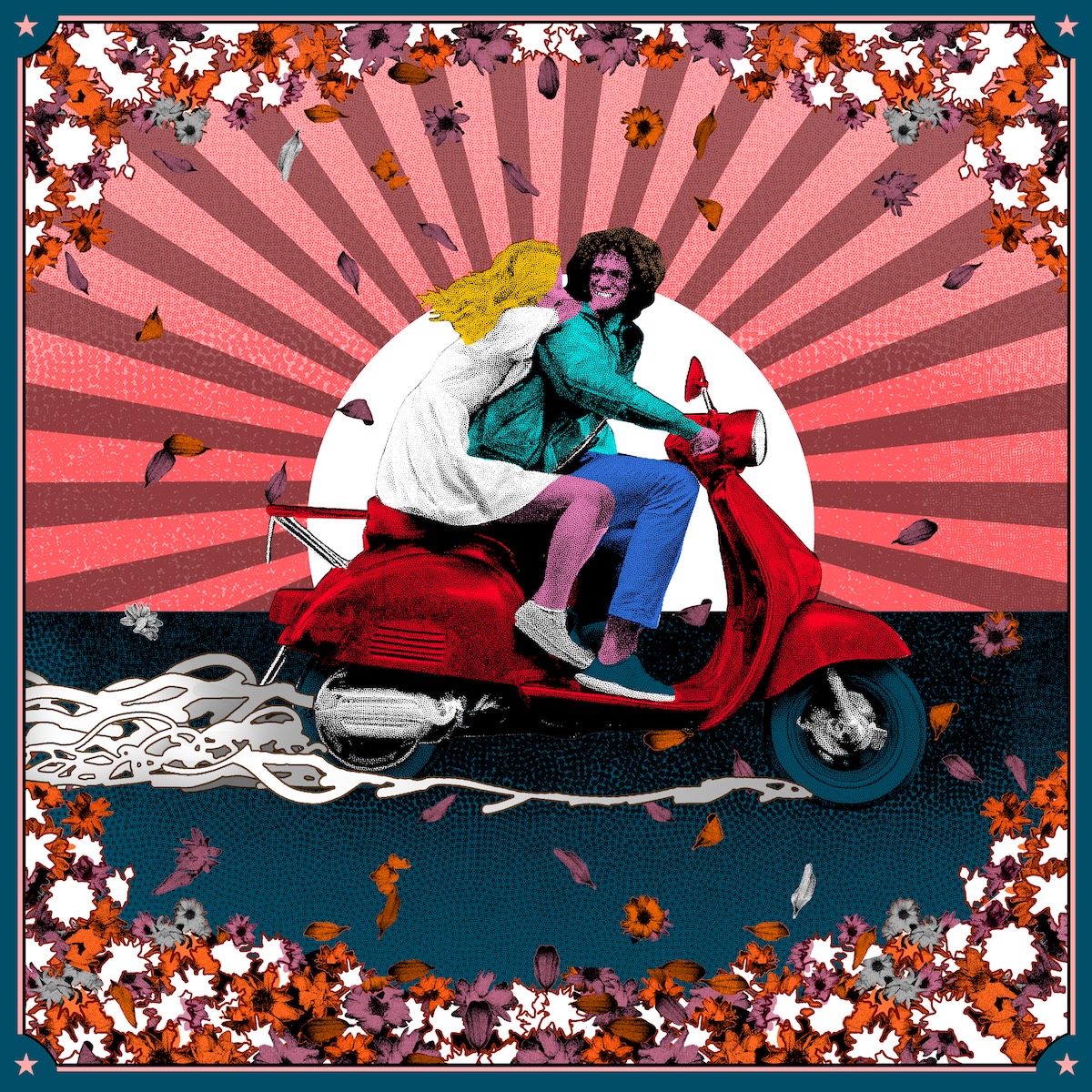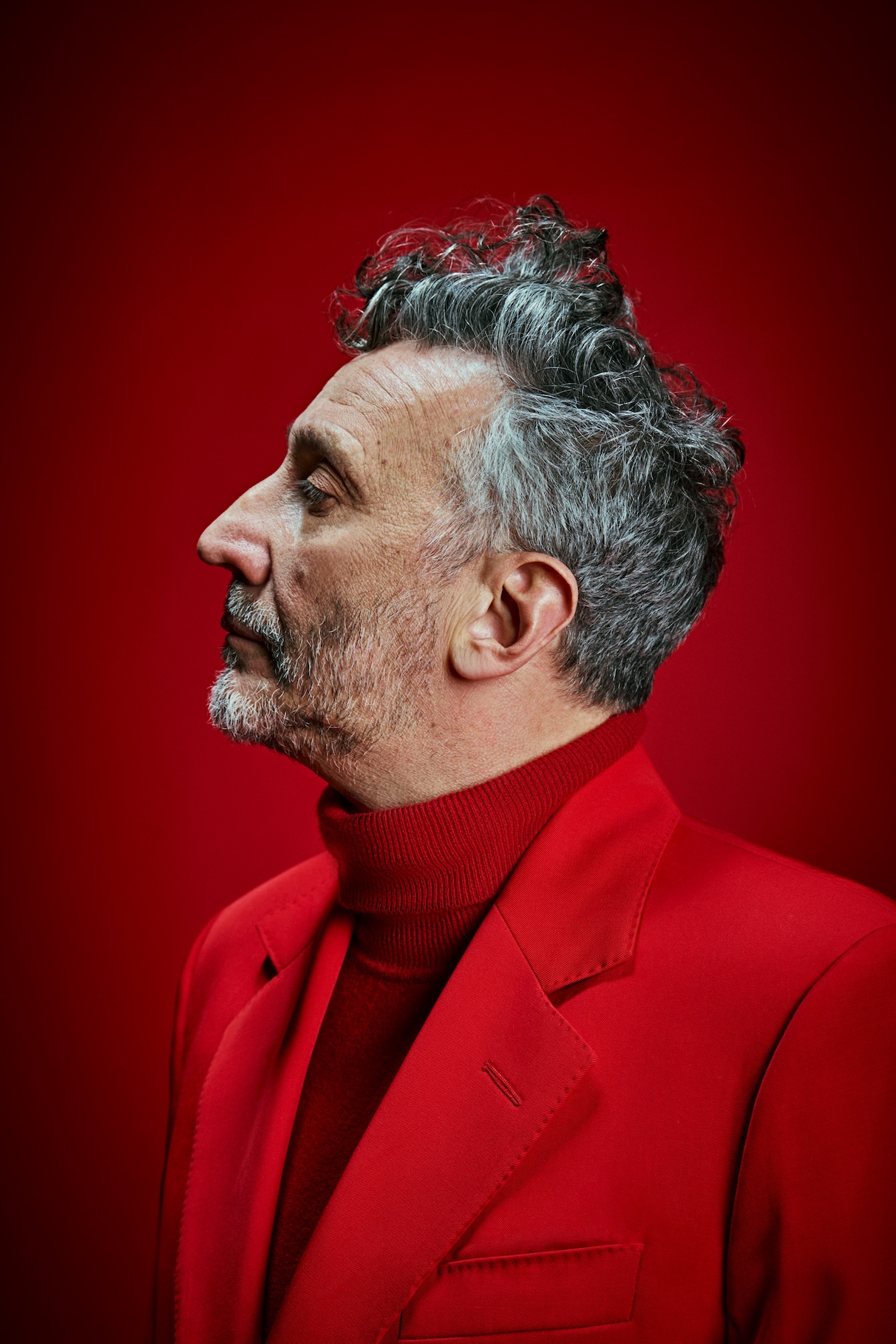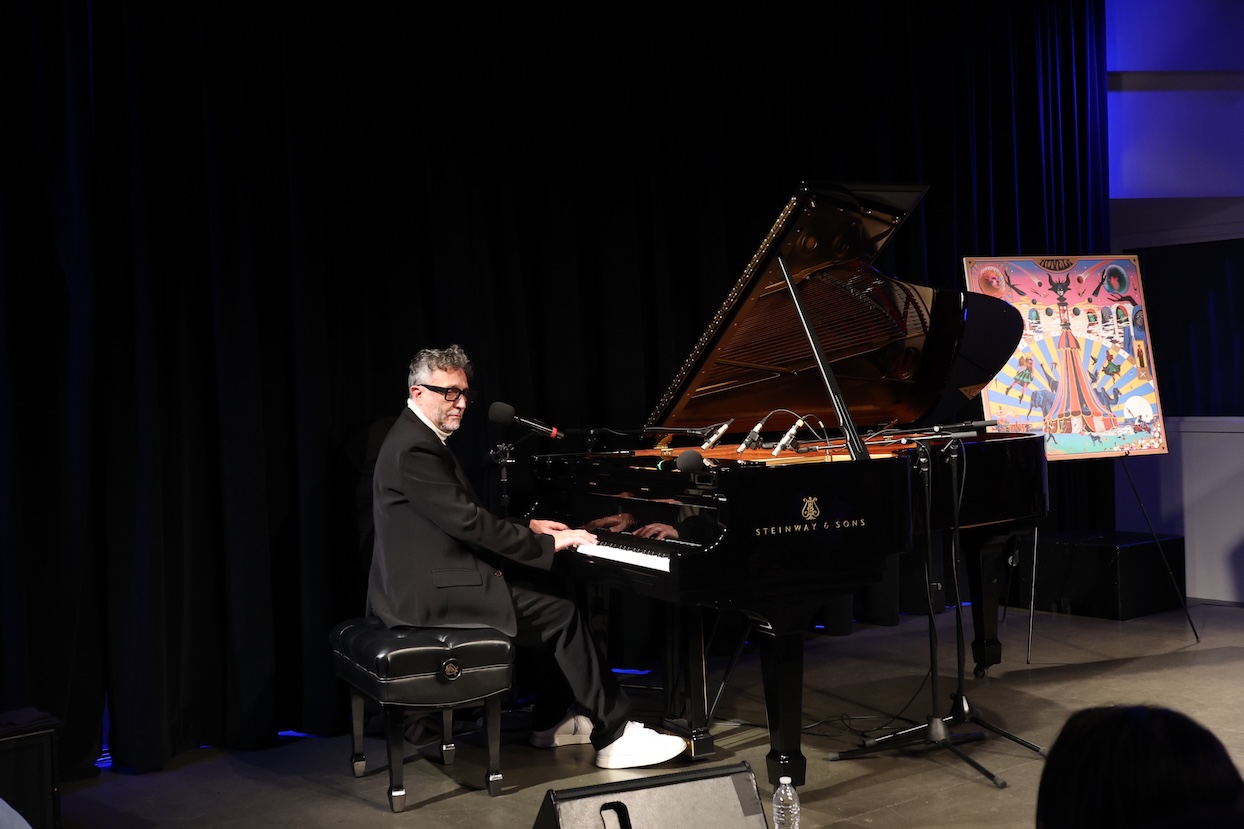Last August I was transferring to Line 7 at Bellas Artes station on the Mexico City subway when I saw the flyer. Fito Páez, Zócalo, 7 Septiembre, 2024, Entrada Libre. The legendary Argentine rocker was set to take part in the iconic free concert series in the Mexican capital’s famous central plaza. I got on my train back home and marked my calendar. A few weeks later, another announcement: The show would be rescheduled due to a health emergency.
Eventually announced for January, later that month I transferred to Line 2 toward Zócalo station. There were delays. By the time the throng of fans on the late train made it up the stairs into the night air, the Zócalo had already been shaking for Fito Páez, in a flowing multicolor robe that swayed as he sang generational hit “Mariposa Tecknicolor,” the crowd jumping and hanging off his every word.
The Zócalo shows—which have seen acts like Paul McCartney, Shakira, Cafe Tacvba, and Interpol grace the iconic square—hold a special place in Mexico City’s cultural programming, as events that bring musicians who might usually play at prohibitive prices at arenas straight to the people. The shows are an equalizing space, one that briefly subdues the jarring difference between a love of music that drives us to follow an artist and the often-vicious industry our favorite artists exist in.
“It is special, especially getting to a city where a historic revolution was planned, and seeing that very place celebrating you—well, the art, not specifically me,” Páez gushes, from his apartment in Buenos Aires. “What you see at work, there is a true exchange between countries, between music, words, and their value. You see how a country so musically formed—and one as rich [as Mexico]—embraces others who come to share their own richness, how at the end we’re all talking about the same thing, which is spending time together while this adventure of life lasts. The most exciting thing about connecting that way is how it exists outside of the mainstream, outside of the technological revolution and the major labels, and continues to be a parallel channel [to the music industry] that still functions with perfect health.”
The Zócalo show was a part of a grand recovery for Páez, whose larger-than-life songs and heartfelt lyricism have made him one of the most respected musicians in the world. Soon after, he played shows across Mexico, Spain, and his beloved Argentina, as well as giving talks in the U.S. He’s bound for Spain this July to play his ambitious new literary-minded album Novela.
Páez started laying down demos of what would become Novela in 1988. He was seeking lightness following the intense recording process that birthed Ciudad De Pobres Corazones, arguably his darkest album. Ey! followed, along with a series of albums that would go on to define the ’90s in Latin America and solidify his place as a defining voice in rock en español, including ’92s El Amor Despuéss Del Amor, the best-selling album in the history of Argentine rock. The final work is dizzyingly expansive, an hour-long concept album that imagines a fantastical world of witches, circuses, and Argentina’s Santa Fe province, near Páez’s native Rosario.

“The original album format was based off of Quadrophenia, the Who’s album from ’73; it was a story told in the form of an album, accompanied by photographs and a text,” says Páez. “It was an immersive experience where you could read, look at photographs, follow lyrics, and listen to those albums, which to me are so key. It excited me, and that format was definitely one of the catalysts [for Novela]. The song is not a solemn genre in the way that literature or film—maybe not comedies—can be. I had one kind of language ready for the script, and had to write in another altogether while adapting it to music, which is more florid and speaks in a more universally understood way.”
Novela is a sonic stretch toward theatricality for the Argentine icon, a bonafide rock opera leaning toward a musical. This isn’t to say the album sacrifices a rock sound or stays in one place, with Páez veering across the spectrum of cinematic anthems (“El Vuelo”), piano ballads (“Cruces de Gin en Sal”), and unabashed funk rock (“Modo Carrie”). The psychedelia of its cover calls to mind surrealist artists Leonora Carrington and Remedios Varo, a perfect storm of technicolor visuals well-suited to the free-wheeling story Páez weaves.
For all its floaty storybook qualities, Novela is grounded in Páez’s reality. Standout track “Superextraño” sees him shade the music of today and lift up peers (read: rock gods) Charly Garcia, John Lennon, and Spinetta to the tune of chugging guitar, an ode to odd ones out in a world expecting us to fall in line. He makes it a point to bring up artists that he finds enduring: filmmaker Adolfo Aristaraín (who coined the title “Argentina Es Una Trampa”), musicians Joni Mitchell and George Gershwin, Jack London (who he is currently reading), and legendary Argentine writer Jorge Luis Borges’ short story The Aleph, which contemplates infinity in a single point.

Outside of Novela, Páez has been busy with literary pursuits. Currently finishing two books, among them his first poetry collection and a book-length essay entitled “Music in the Times of Mass Dementia” about what exactly the hell happened to music between the 20th and 21st century. The latter was recently read to students at Boston’s celebrated Berklee College of Music. Written in fragmentary statements as irreverent and cutting as they are instructive, the essay calls to mind John Cage’s “Ten Rules For Teachers and Students” and Oscar Wilde’s “Phrases and Philosophies For The Use of the Young.” It’s his way of trying to make sure the next generation of creatives goes in untainted, proposing an antidote to the ever-more-curated digital landscape. Páez has a lot to say, maybe too much.
“It’s one of those things where the essay is so dynamic that as the days go by I want to add something else; I’m finally at a point where my editor is getting it out of my hands,” he admits. “A deadline where I don’t have to write anymore would help me a ton, because this is the kind of work you could keep adding to easily. The [essay form] has that quality. There’s no element where you can say ‘period, done.’ It just simply must be abandoned so something new can happen.”
In Argentine director Eliseo Subiela’s El lado oscuro del corazón, main character Oliverio—vaguely based on the poet Oliverio Girondo—takes the subway. The title track of Páez’s Ciudad de Pobres Corazones plays, and the poet finds himself face-to-face with one of those tragic figures of the city, driven mad by Buenos Aires and singing a campy karaoke of the song to his face. Páez admits to detesting the album, but what he managed to do in capturing that bitter rage was expand upon his own ideas of emotion. Without that darkness, the witches trying to craft “perfect love” on Novela don’t exist.

If one strips away the magic and literary theory of his latest, Páez remains obsessed with his primary theme: love. Whether he explores the darkness it can plunge us into as in Ciudad de Pobres Corazones or the ways we can learn to love again as in his global hit “El amor después del amor,” Páez is an artist that has made a mission of exploring every ridge of the heart. Even the apex of Novela, “El Triunfo Del Amor,” is an upbeat, spacey funk rock track about how love conquers all. It’s a fitting sentiment to express, both as the “happily ever after” fairy tale ending of his latest, and as an optimistic grace note in a career that has conquered the world with the kind of moving insanity that can only come from a real lover.
“There is nothing more important than love,” he says. “Love in all its forms is the only theme that interests me because it is so broad: love for our children, romantic affections, pity, compassion, the hug, solidarity, tenderness, eroticism. It’s a theme that spreads itself over what most matters to me, which is people at the edge of the cosmos, which is the true reality, and all of us are there: the multi-millionaire and the children dying of hunger. This is where we see one of the great chasms of our age, which is where all of us are located in regards to love, what love means to each of us, and how we can show it to others.”
This interview was conducted in Spanish, with quotes translated and edited for clarity.
→ Continue reading at Spin

